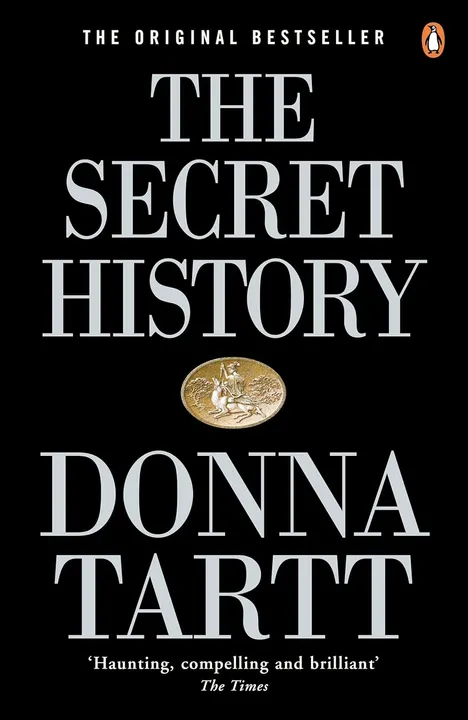“I would be miserable cranking out a book every three or four years,” Donna Tartt mentioned offhandedly to The Telegraph, when asked about the ten years between the releases of her three books shortly after the release of The Goldfinch in 2013.
With clockwork timing, May 2023 saw fans adamant that Tartt had a release planned with a word from the author herself. These rumours became all but fact to fans after Goodreads mistakenly added an untitled book under Tartt’s page, stating that it would be published on the 1st of June 2023.
What is it about Tartt’s writing that provokes this intense devotion? Ironically, Donna Tartt’s debut and most popular novel, The Secret History, is an enduring monument against idolatry—at least, in theory. The novel centres around the narrator, Richard Papen, befriending and obsessing over a group of five wealthy classics students, guiding them into committing murder leading to the downfall of all. All five are particularly enamoured with their teacher, Julian. He is outwardly intensely charismatic and intelligent, with connections spanning Marilyn Monroe to an alleged middle eastern princess. Yet, at his most crucial moment when his students out themselves as murderers, he vanishes in cowardice.

On first reading, it’s easy to be swept away in the romance of ancient Greece, summer houses in the country and old New England collages in autumn along with Richard, only amplified by Tartt’s dreamlike, slightly old-fashioned prose. The novel even begins with Richard musing: “Does such a thing as ‘the fatal flaw,’ that showy dark crack running down the middle of a life, exist outside literature? I used to think it didn’t. Now I think it does. And I think that mine is this: a morbid longing for the picturesque at all costs”. On further readings, however, the ridiculousness begins to emerge: Henry Winter, hailed throughout as a genius and the ringleader of the group as they lie their way out of murder charges, is stunned to discover that man had landed on the moon some twenty years prior. The narration, wistful and nostalgic, reads of that of an elderly man, rather than a twenty-eight-year-old graduate. ‘Up until the very end,’ muses Richard, ‘there was always, always, Sunday-night dinner at Charles and Camilla’s, except on the evening of the murder itself…and it was postponed until Monday’.
But how is it that Tartt’s six-hundred page ode against fanaticism and self-importance could fly so thoroughly over fans’ heads? It goes almost without saying that Tartt’s writing naturally attracts a cult-like following. From child-murder in fallen plantation families, to art theft amongst the rubble of terrorist attacks, Tartt’s novels all explore what it means to be haunted, all her characters almost having a casus belli outlined in the first one-hundred pages.

In many ways, however, Tartt as an author is something of a contradiction against The Secret History’s message. The Goldfinch fetched claims from critics and readers that it is ‘Dickensian’, both in flattering and not-so flattering reviews. It garnered praise for its vivid cast and immersive settings but was also panned as being ‘a children’s book for adults’, complaining of a contrived plotline and pretention. James Wood wrote in The New Yorker, “Tartt’s consoling message, blared in the book’s final pages, is that what will survive of us is great art, but this seems an anxious compensation, as if Tartt were unconsciously acknowledging that the 2013 Goldfinch might not survive the way the 1654 Goldfinch has.”
When Tartt was asked if she was happy about the comparison to Dickens, she simply replied, “Who wouldn’t be?” Tartt provokes imagination. The Goldfinch was written by hand in the New York Public Library. Shortly after the release of The Secret History, she made the active choice to remove herself from public life: she has no online presence, and her interviews over the past thirty years have been far and few between.
The same resistance to the modern age that we laugh along with in The Secret History, on further research, is celebrated by Tartt personally – not without reason, but in a young adult audience to which these are an integral part of life, lends itself to romanticisation.
Tartt, of course, cannot be blamed for the misinterpretation of her novel: again, today’s young adult audience interprets Tartt’s work in a massively unique way than most publishers in 1992 couldn’t have predicted. When visual platforms dominate the Internet, most cannot help but sympathise with Richards ‘morbid longing for the picturesque’ and demand Tartt to live up to her thus far consistent turnaround.
So, when the self-declared hamartia of, arguably, the antagonist of the book, becomes a deeply relatable issue in modern life, the book takes on a new, evolved, meaning. A large part of Tartt’s cult following comes not only from her eccentricities, intense plots and lively prose, but in how these have evolved, or not, in the modern day. When readers, by large, see themselves in Richard, can they be blamed for projecting the charismatic, quirky tutor role onto Tartt? While founded on irony, Tartt’s newer, younger fans are drawn in by her accidentally sympathetic ability to predict the future.





















